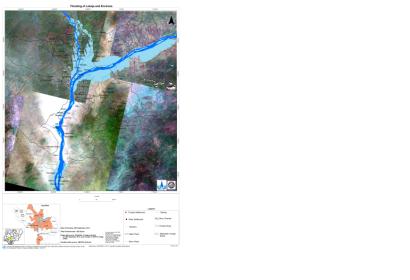The International Charter "Space and Major Disaster" was activated twice last week for floods in Africa: Chad and Nigeria.
UNITAR/UNOSAT on behalf of UNICEF activated the mechanism for Chad on 10 October 2012. Heavy rains which started in early August had caused continuing floods in Chad. Hundreds of thousands of people have been affected by the floods, with damage to both property and agriculture. In the Rig Rig District of the Kanem Region, 220 houses were destroyed and 3000 people were displaced. In the Sila Region, more than 13,000 houses were affected and the flood waters blocked major humanitarian supplies. In Guera, an estimated 850 people were in need of emergency support. And floods have also been reported in the capital, N'Djamena. In September the flood waters were still present, and had affected an estimated 466,000 people, and killed 34. 96,000 houses were reported destroyed and 255,000 hectares of crops lost.
In Nigeria, the Nigerian National Emergency Management Agency (NEMA) activated the Charter on 10 October, 2012. The flood situation in Nigeria, which already led to an activation in late September for Koji State is now reported as being at crisis proportions after affecting Bayelsa State. Virtually all of the communities along the Niger and Benue Rivers have been flooded, and some have been submerged. Bayelsa State is located on the coast of Nigeria, where the rivers empty out into the ocean, and the natural terrain in the area is flat and swamp-land. The flooding in Nigeria has been reported as the worst in 50 years, and though artificial barriers and precautions were in place in Bayelsa State, the flood waters have overwhelmed them. Thousands of people have been left homeless, with both residential and public buildings destroyed. The flood waters have cut off roads to some communities and agriculture has been ravaged by the flood waters, leading to concerns of potential starvation next year. The local population continue to struggle with the situation, displaced from their homes and at risk from disease in some of the worst affected areas. Relief camps have been set up in the Sagbama and Odi communities.

